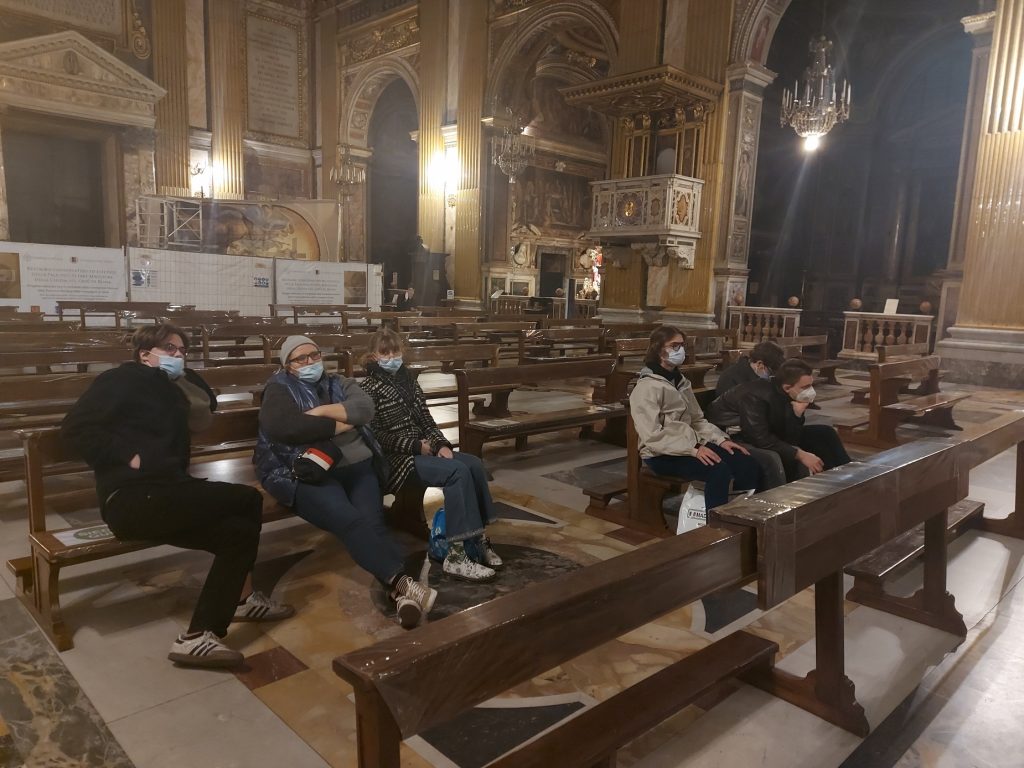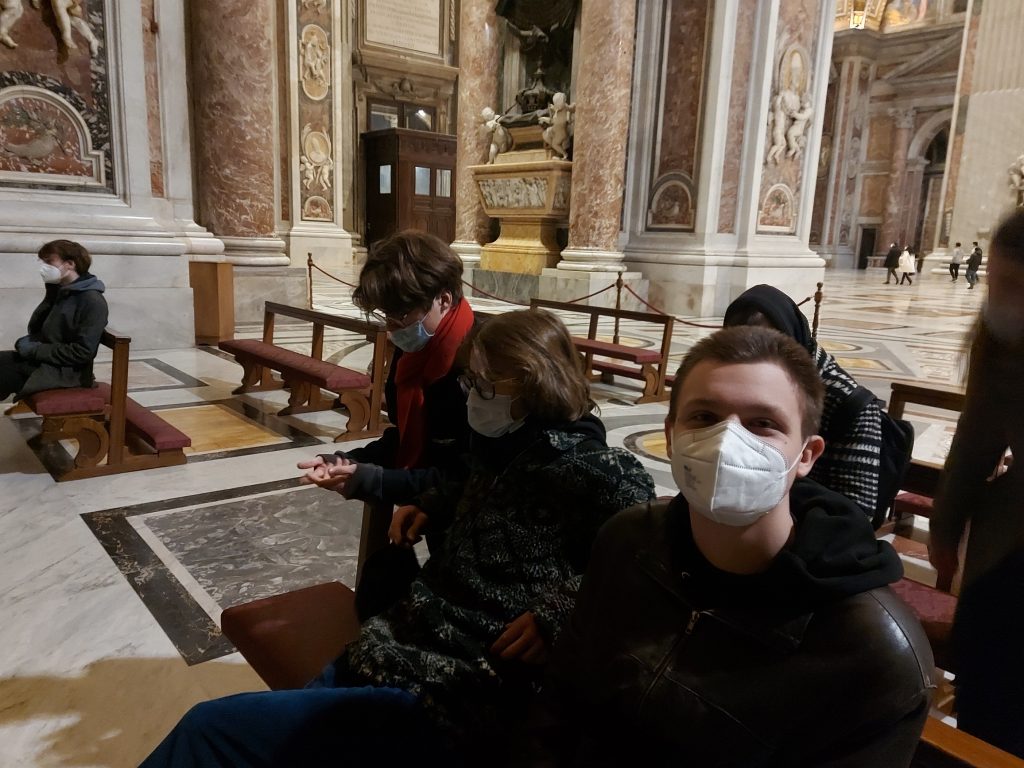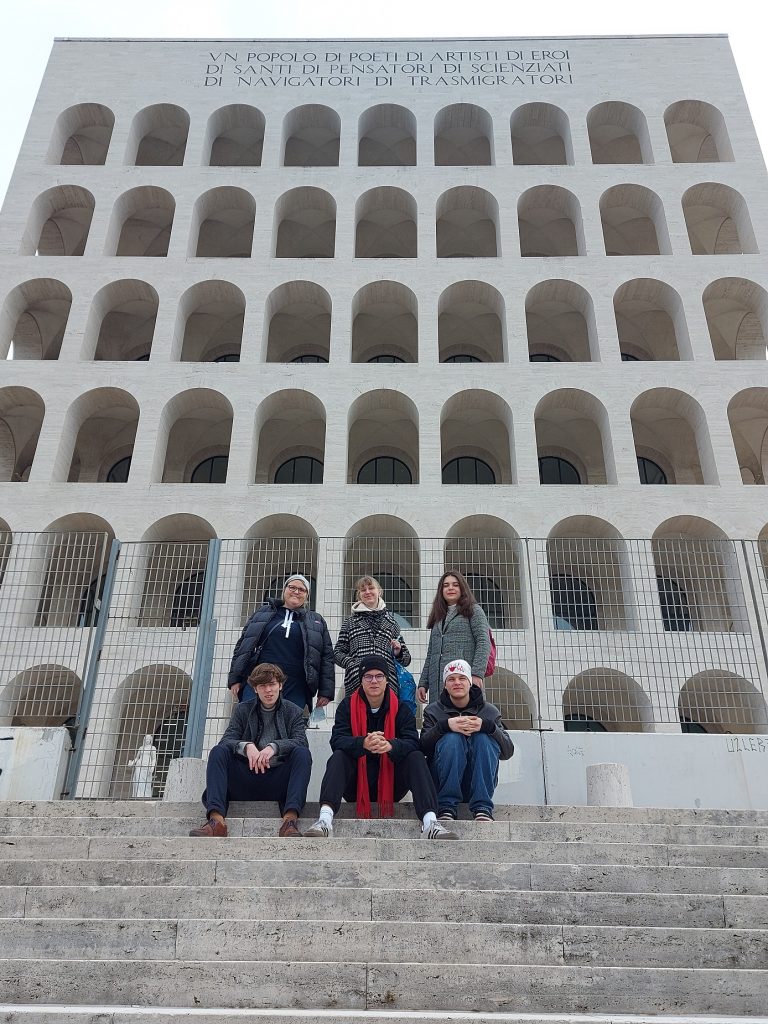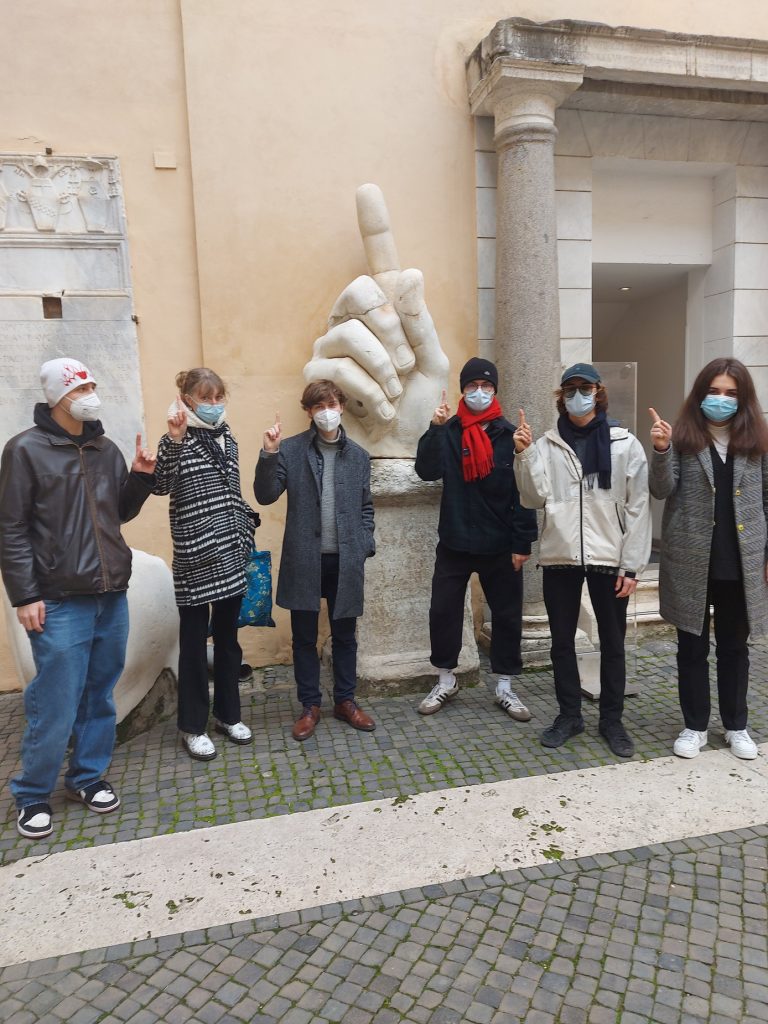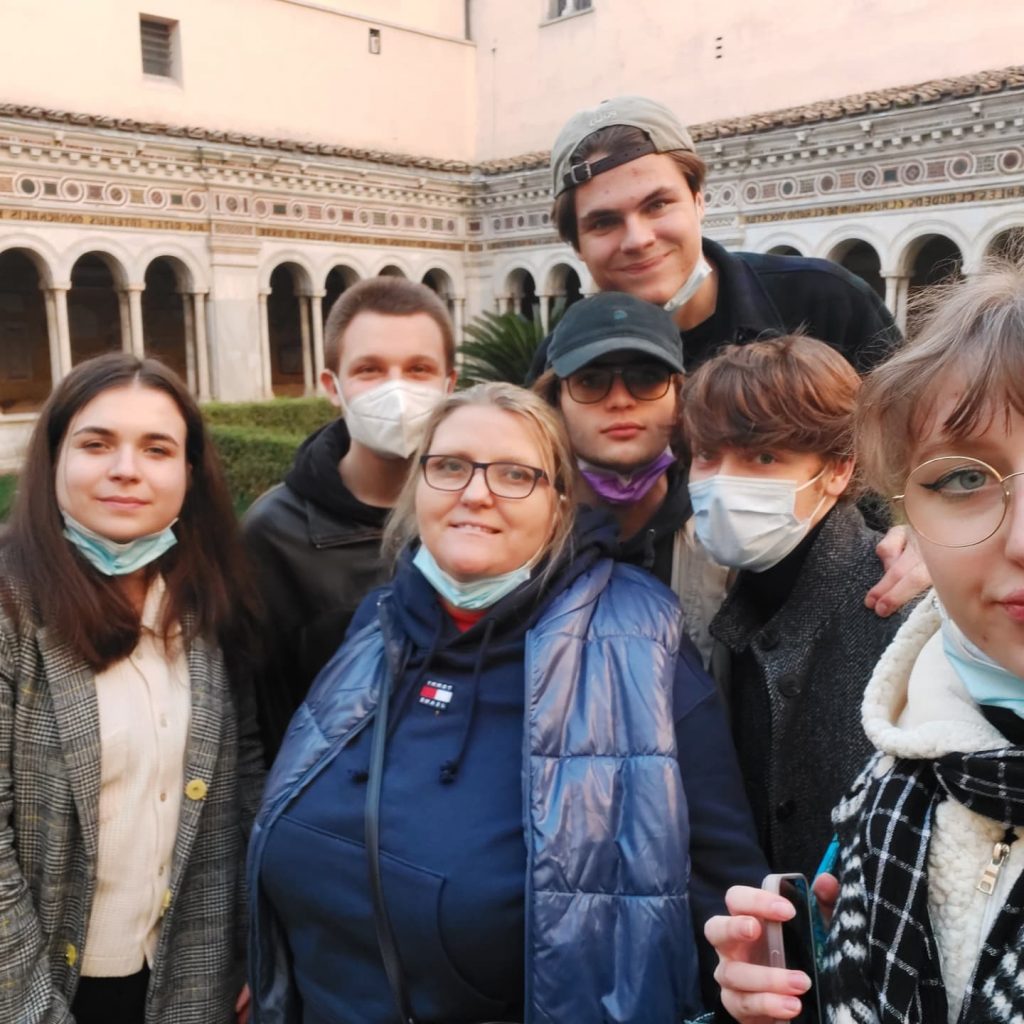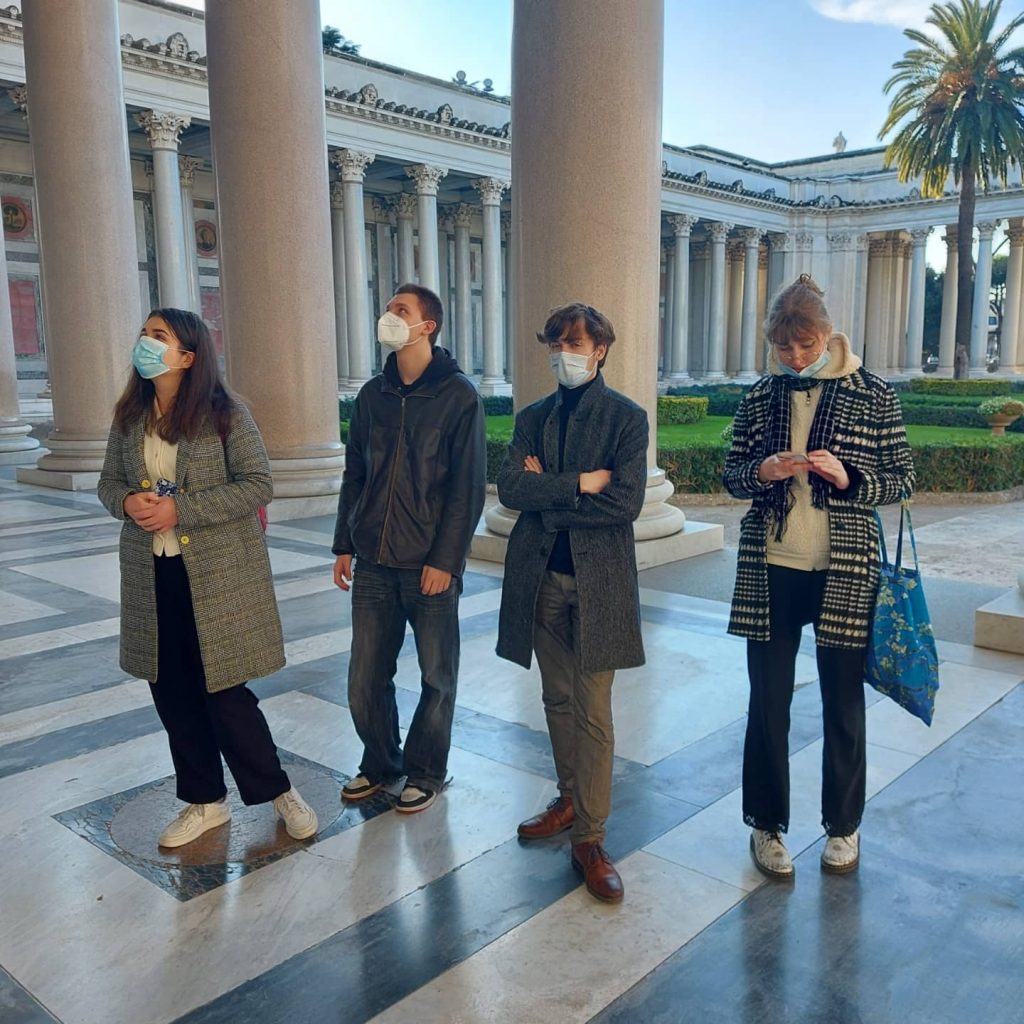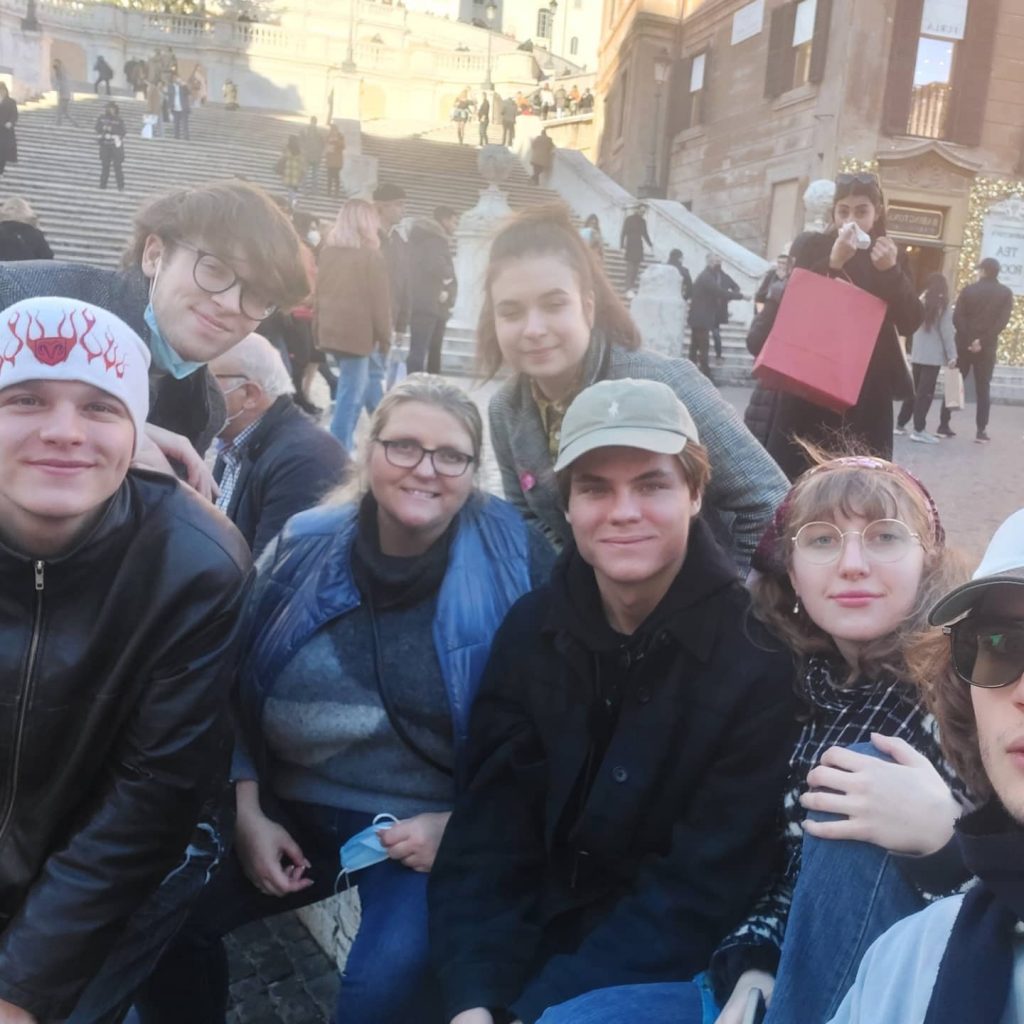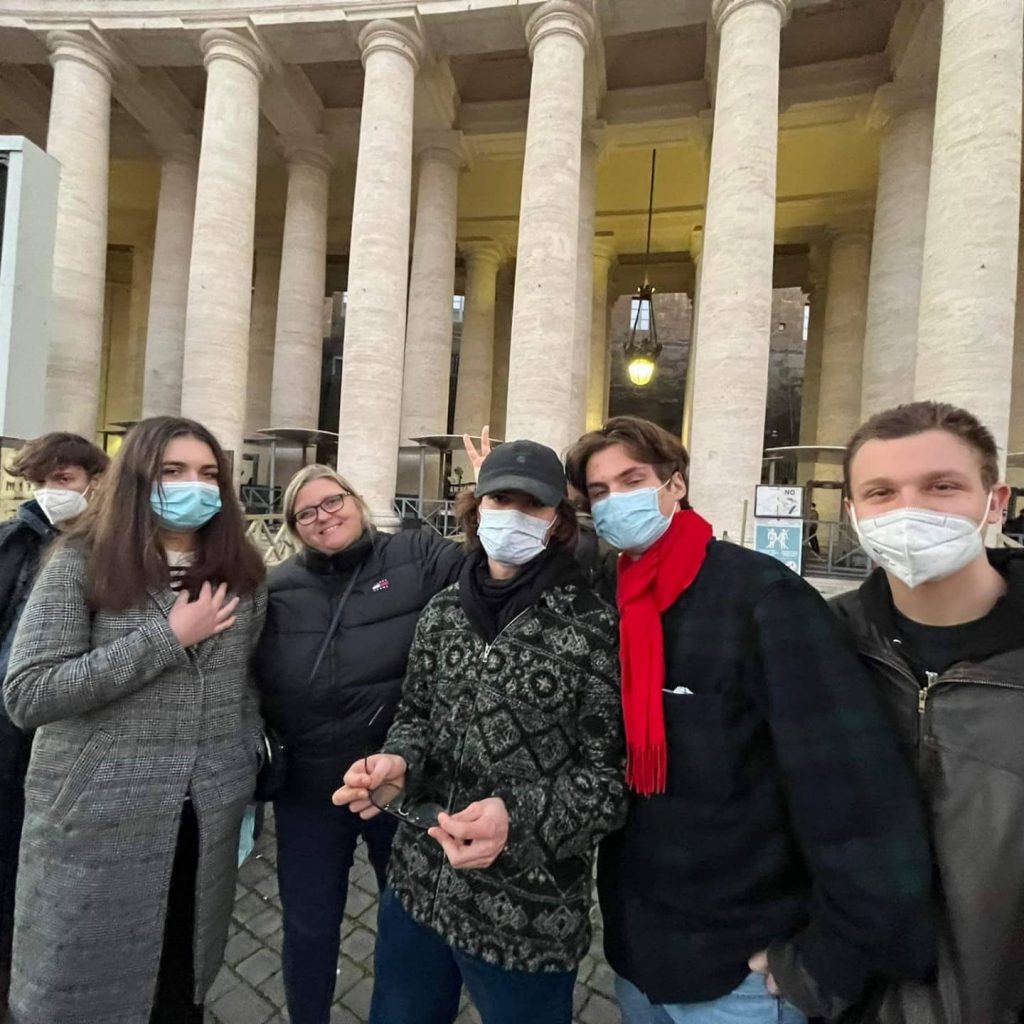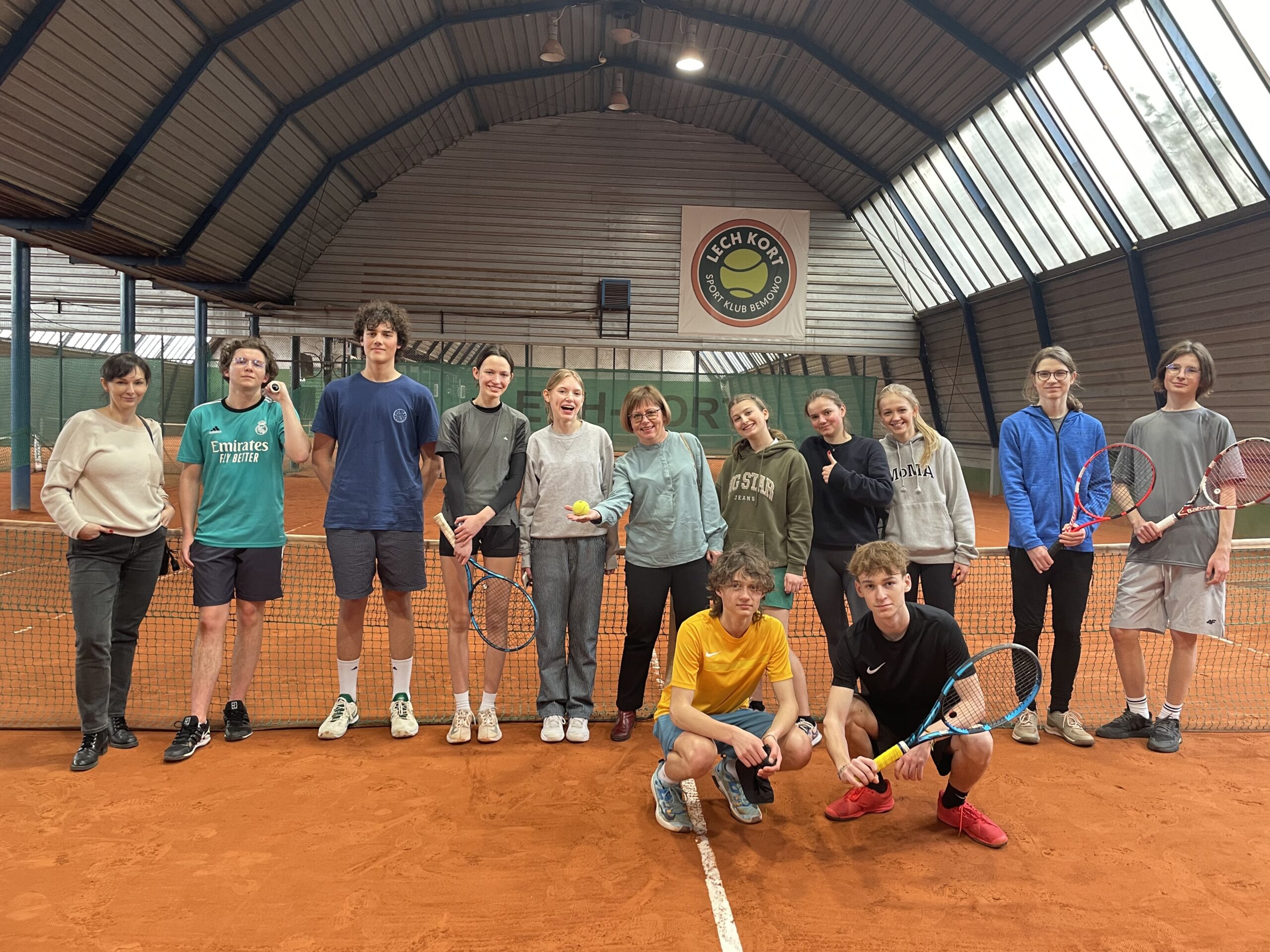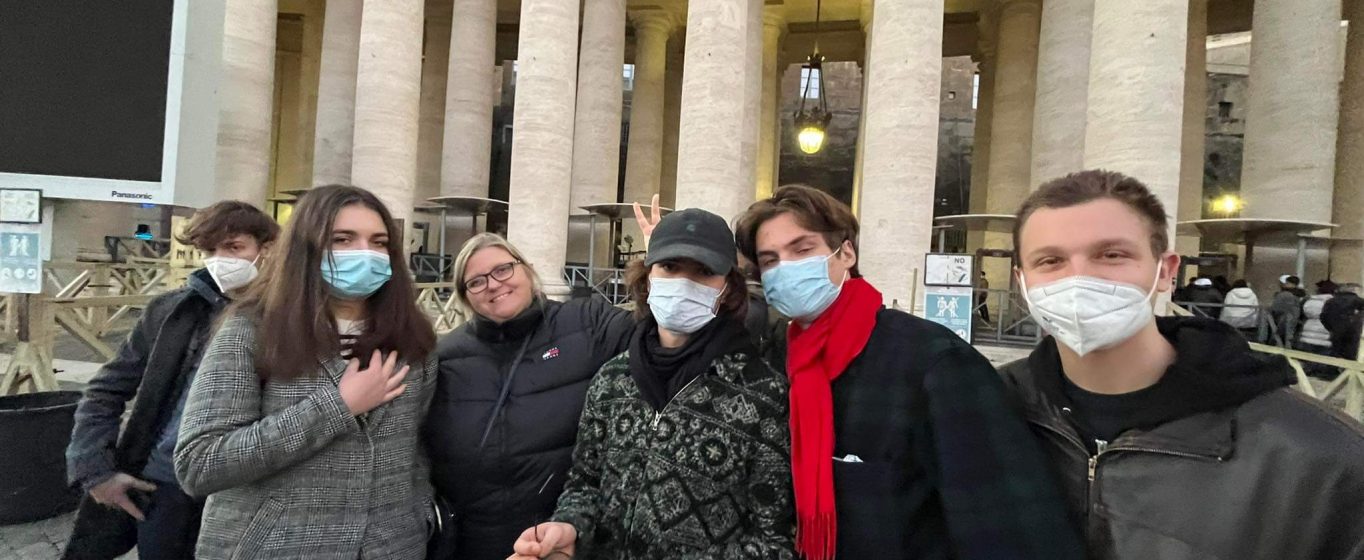
In the Eternal City
As a group of history enthusiasts, we have just returned from Rome, where we visited must – see places in the Eternal City. We walked around the Roman Forum, the ancient city square surrounded by seven hills. In the Colosseum, or the Flavian Amphitheater, we saw the arena, the place of martyrdom of the first Christians, and the historical exhibition. In addition, we visited the private house of Roman patricians, i.e. Domus Romane, and we looked at the relief frieze with 155 scenes depicting the triumph of Emperor Trajan over the Dacians on the Trajan’s Column. We did not manage to get to the Pantheon, the temple founded by Emperor Hadrian due to the long queue.
We started one of the mornings with seeing the paintings by Caravaggio and Botticelli and with the exquisite sculptures by Bernini in Villa Borghese. In the Basilica of Santa Maria del Popolo, we saw more of Caravaggio’s masterpieces: “The Conversion of St. Paul “and” The Crucifixion of St. Peter “. We walked the Spanish Steps and around the Trevi Fountain. Rome is also, according to tradition, the burial place of the two apostles Peter and Paul, which is why we visited both the Basilica of St. Paul Outside the Walls and the St. Peter’s Basilica belonging to the Vatican city.
We learned about the history of the unification of Italy and the role of Garibaldi in the museum located in the monumental building erected in the Venetian Square in honor of the first king of united Italy, Victor Emmanuel II.
We continued our Roman expedition in the Eur district (Espozicione Universale Roma), the construction of which was initiated by Benito Mussolini. The dictator wanted to create a third Rome, after the ancient and papal one, and the impulse for the creation of the new district was to be the World Exhibition planned for 1942. The exhibition did not take place, but the district full of charm and fantasy with the Square Colosseum was built.
We said goodbye to Rome with our last visit to the Capitoline Museums, where there is a sculpture of the legendary she-wolf, the symbol of the capital of the ancient empire. (text by Beata Ciacek based on Michał Dąbrowski’s account; photos by Agnieszka Siatkowska)
